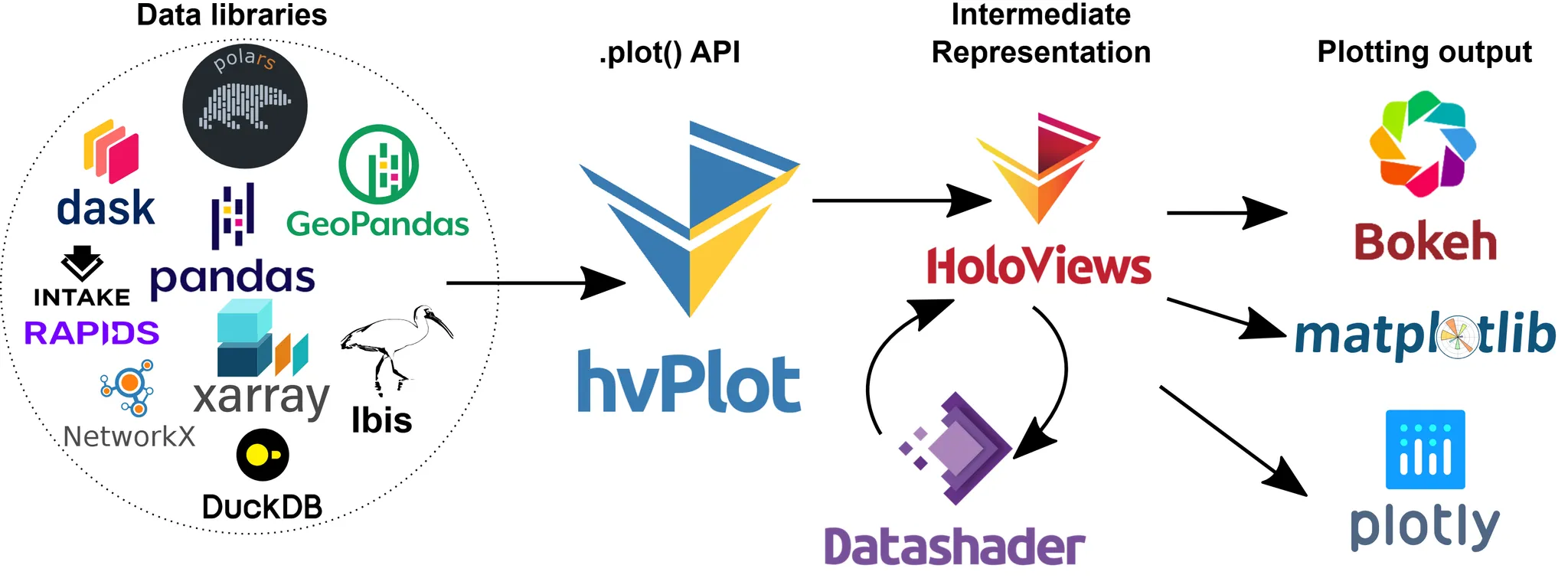UXarray has a very familiar feel if you are already used to Xarray.
See also: UXarray in 10 Lines.
1. Loading data
The open_dataset function(link) takes two positional arguments; the first one being the definition (?) of the mesh, and the second one is the actual data on that mesh.
Similarly, the open_mf_dataset function is there too.
You may find it similar to the convert_mpas utility: 1st argument = mesh; the rest = data.
For MPAS, we can use the static file as the grid file, since it contains useful metadata to construct the grid.
import xarray as xr
import uxarray as ux
uxds = ux.open_dataset("/path/to/mesh.static.nc", # grid file
"/path/to/output.nc") # data file2. Plotting
(uxds['rainc'].isel(Time=TIME)
+uxds['rainnc'].isel(Time=TIME)
).plot(# backend='matplotlib',
aspect='equal',
height = 900,
width = 1600,
)Plotting is easy. Get a dataarray and use da.plot(). Here I select rainc and rainnc from the ds, and selected a time and added them together.
UXarray can use different backends. The default is bokeh which produces fancy interactive graphs. If we add backend='matplotlib' in the plot function, it would use matplotlib .
The default view is very small. So we can use height and width to adjust it. This is implemented not in bokeh but in hvPlot .

Above is a diagram showing the relationship between these libraries mentioned.
UXarray —> hvPlot —> Bokeh.
3. Add a background map (for Bokeh)
See also: Plotting
UXarray recommends the GeoViews package, which is a wrapper of our good old Cartopy.
import cartopy.crs as ccrs
import geoviews.feature as gf
(uxds['rainc'].isel(Time=TIME)
+uxds['rainnc'].isel(Time=TIME)
).plot(projection=ccrs.PlateCarree(),
# backend='matplotlib',
aspect='equal',
height = 900,
width = 1600,
)*gf.coastline(scale='50m',projection=ccrs.PlateCarree())geoviews.feature can be used just the same as cartopy.feature. So here I set the scale to be 50m (better resolution). Don’t forget to set the projection as well!
Extra: plotting the mesh
Reference: Link
You can easily plot the mesh like this:
grid_path = "../../test/meshfiles/ugrid/quad-hexagon/grid.nc"
data_paths = [
"../../test/meshfiles/ugrid/quad-hexagon/random-node-data.nc",
"../../test/meshfiles/ugrid/quad-hexagon/random-edge-data.nc",
"../../test/meshfiles/ugrid/quad-hexagon/random-face-data.nc",
]
uxds = ux.open_mfdataset(grid_path, data_paths)
uxgrid = uxds.uxgrid
uxgrid.plot.edges(color="black", title="Grid Edge Plot")It is quite GPU intensive.

